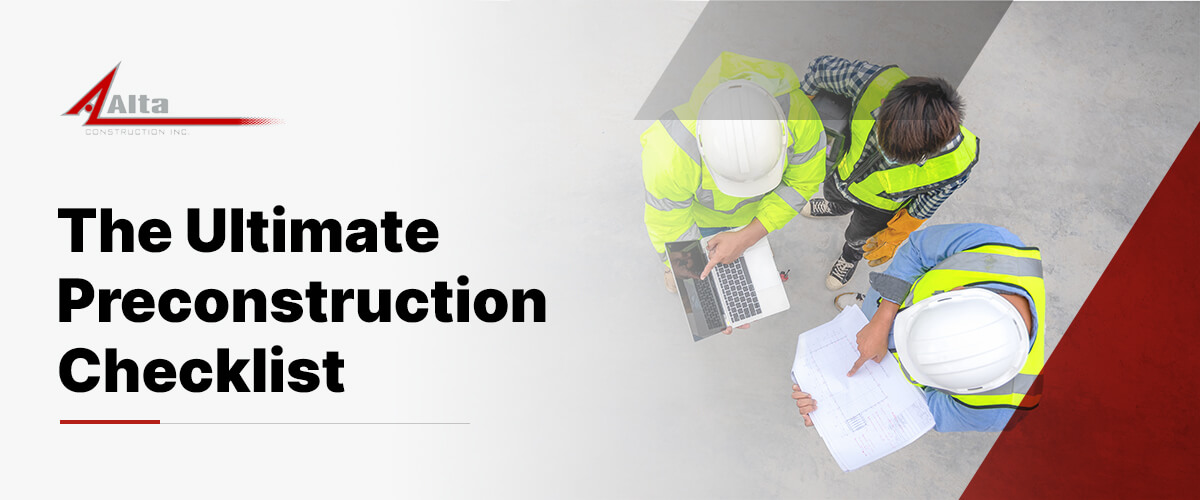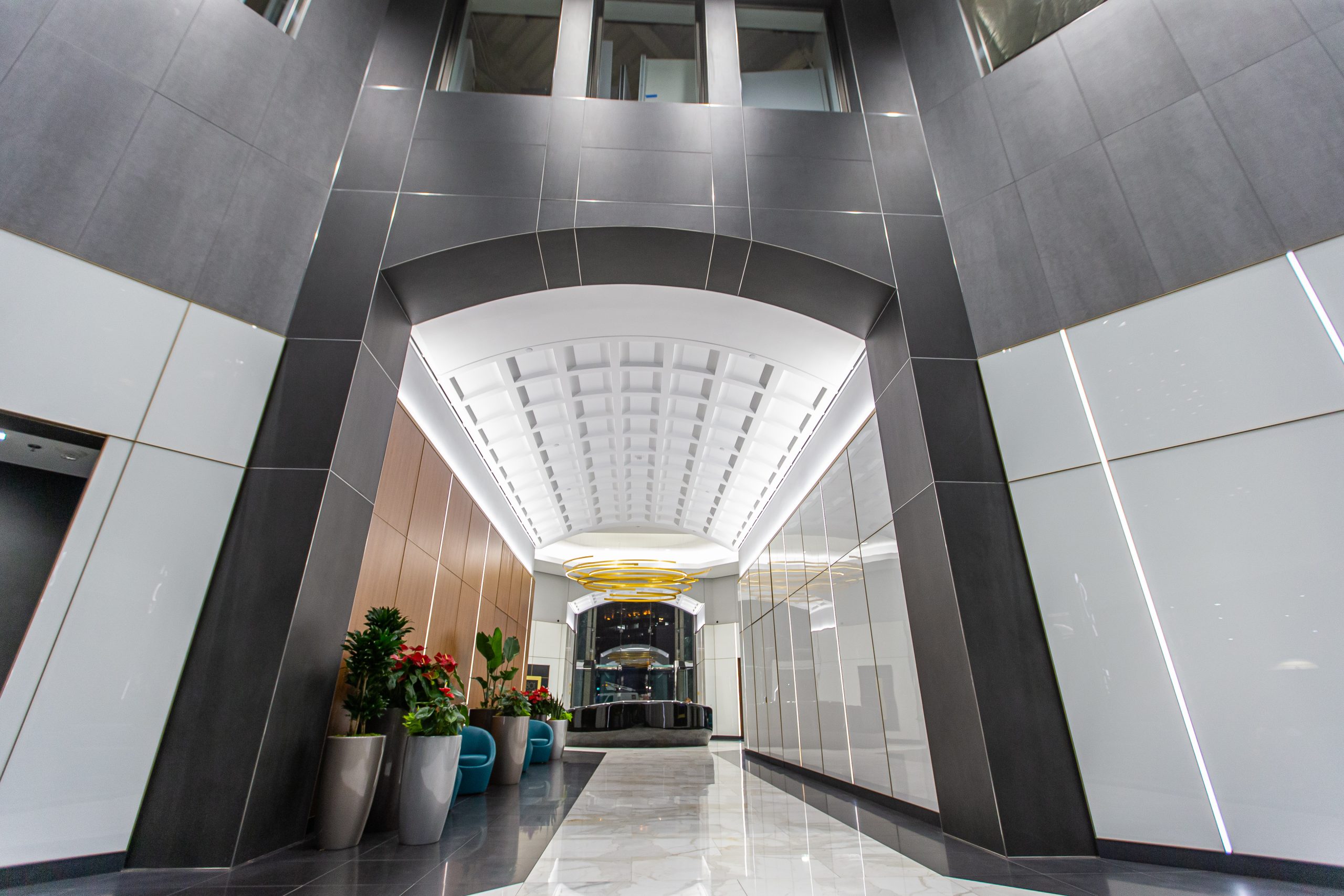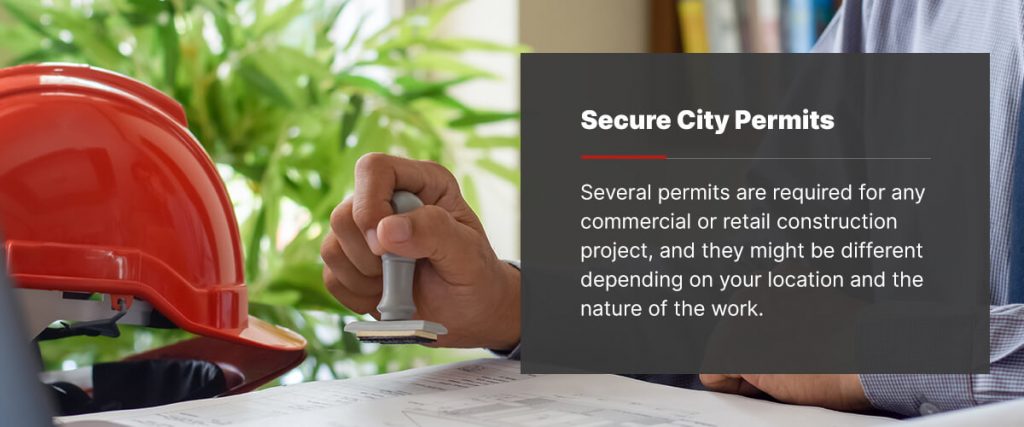


Before you launch a client’s commercial or retail project, there are a few decisions to make and construction phases to plan. The preconstruction phase for commercial space renovation is the process of planning a construction project before formally getting started. Preconstruction includes everything from understanding your client’s needs, and setting project goals to investigating the location and determining your capabilities.
Construction companies and architects must complete all of these preconstruction stages to ensure the best possible outcome for their project. We’ve compiled the ultimate preconstruction checklist to help you ensure you’ve checked every box. Let’s get started.
Before you can begin any construction project, it’s vital to understand your client’s needs. After you’ve communicated about their expectations and project goals for their retail or commercial space, you can determine the project’s scope and feasibility. Part of this process is surveying the location’s existing status with your project team to decide what you will need to accomplish to turn the client’s requests into reality.
You may need to personally inspect the space or existing structure to understand the modifications to make. Then you can decide how to achieve the client’s vision. Conducting a physical survey will help you determine what steps to take for the project. However, it’s also helpful to see the building layout without being on the job site.
An advanced construction technology tool can help you visualize your space in three dimensions. At Alta Construction, we use Matterport for construction in our building information modeling (BIM) processes to generate 3D building models. Matterport uses artificial intelligence (AI) that constructs a virtual space you can share and collaborate on with your team. When you use Matterport to facilitate your design, you can also monitor site conditions and effectively manage maintenance.
One of the essential preconstruction stages is deciding on your project budget. Estimating the project’s cost ensures that your client can afford the modifications the architect and engineers would make. Preconstruction budgeting is also critical to ensure your project avoids unnecessary expenses and potential delays. Planning a budget for construction costs also helps you prioritize phases and create a schedule.
Contractors and other planners involved in the construction process must consider several costs when designing a budget. These expenses include:
At Alta Construction, we utilize the easy-to-use BuildingConnected software to plan and budget projects at every construction phase and stage. BuildingConnected enables efficient preconstruction planning and keeps stakeholders informed about updates. The software also allows you to make data-driven budgeting decisions.

The next step in the pre-construction phase for commercial space renovation is to identify and acquire the necessary construction permits. Multiple permits are required for any commercial or retail construction project, varying by location and project type. This stage should be completed during preconstruction to avoid delays and ensure compliance with local regulations. Key permits include local site plan reviews, state plan reviews, and industry-specific licenses. Obtaining these permits early in the process helps prevent project schedule disruptions.
Every city and community has different commercial building requirements, and some may demand more detail than others. Here are a few standard city permit requirements you may need to acquire:
You’ll first need to contact your local permit office and acquire the necessary permitting applications to start the process. Once you’ve turned those in, you can pay your licensing fees and get to work.
Much of the time, rented commercial spaces need some improvements before businesses can move in. Each tenant has unique structural and design needs, from brand-specific design elements to customized floor plans. However, landlords also have rules about what customized alterations a construction team can make. For tenant improvements in a commercial or retail space, it’s crucial to adhere to the landlord’s specific requirements during the preconstruction planning phase. This ensures compliance and smooth execution of the project.
Common tenant improvement projects include:
Any improvements you perform must stay within the boundaries of the tenant’s lease agreement and strictly adhere to the landlord’s rules. Accommodating these regulations can sometimes be a challenge. Here are a few essential tips to help tenant improvement construction projects go smoothly and according to the landlord’s wishes:
The final step in the commercial or retail preconstruction process is to make a preliminary schedule. It’s essential to understand the duration of each phase in the construction project and material lead times before getting started. A detailed schedule helps prevent unnecessary waiting during the process.
Creating and sticking to a construction schedule is a complicated task, but one that is necessary for your retail or commercial pre-construction checklist. Consider these scheduling strategies for finishing your construction project on time: